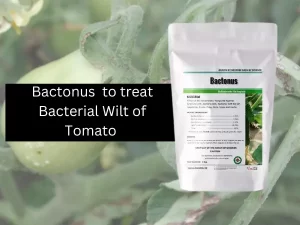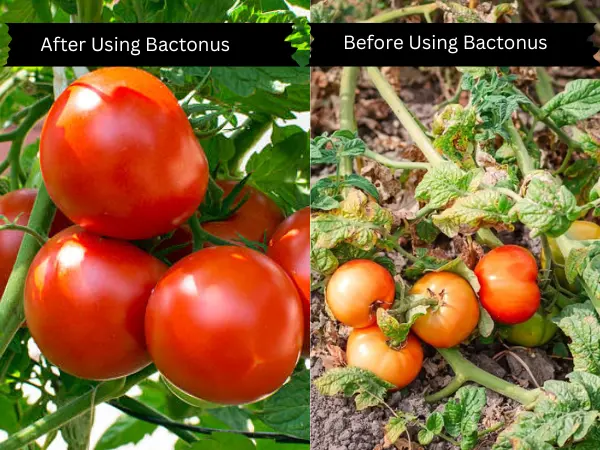Bacterial wilt of tomato is probably the most destructive disease to the production. Bacterial wilt is a disease caused by the bacterium Ralstonia solanacearum and it affects tomatoes, potatoes, eggplants and other nightshades. This results in a progressive yellowing and eventual wilting and death of the affected plants.

Cultural practices are therefore critical in the control of and management for bacterial wilt of tomatoes. Such activities are intended to make it harder for the disease to develop and propagate in their surroundings.
An important principle of agriculture is crop rotation, which means that crops are alternately grown on the same plot of land each time. The cultivation of healthy crops disrupts the pathogen’s life cycle and reduces the accumulation of Ralstonia solanacearum in soils. It is suggested that tomatoes should not be planted in the same place for more than th3.ree years. This helps to control the bacterial wilt on the tomato.
Soil management plays a crucial role in not only nourishing tomato plants but also preventing infections like bacterial wilt. This involves fostering a thriving community of beneficial microorganisms in the soil that can naturally suppress harmful pathogens like Ralstonia solanacearum, the culprit behind bacterial wilt.
Incorporating organic materials regularly, maintaining optimal soil moisture and pH levels, and avoiding excessive tillage are essential practices for promoting a healthy soil microbiome. These practices act as a preemptive treatment for bacterial wilt of tomato, creating an environment where beneficial microbes outcompete and suppress the growth of the disease-causing bacteria.
Soil health management helps to biological control of bacterial wilt of tomato for a more sustainable and environmentally friendly approach to disease management compared to traditional chemical methods.
The bacterial wilt in tomatoes has been controlled with traditional chemical pesticides. On the other hand, some of them come with weaknesses such as evolving strains that resist pesticides and posing risks to the environment.
Some effectiveness has been observed with chemical pesticides, like the copper- based ones, in controlling bacterial wilt. Yet, their usage is often of little efficacy, and the application of pesticides may breed resistance in Ralstonia solanacearum.
This has raised concerns about the impacts on the natural environment and the potential for harmful effects on human beings caused by the extensive application of chemical pesticides. Pollution of soil, water, and non-target species by pesticides may disrupt entire ecosystems, and pose associated health hazards.
Biocontrol is a potential strategy for controlling bacterial wilt of tomatoes instead of using chemical pesticides. In this case, organisms that benefit the body are used to suppress the growth of infectious pathogens.
 Battling Bacterial Wilt: A Safeguard for Your Tomato Patch
Battling Bacterial Wilt: A Safeguard for Your Tomato PatchBacterial wilt, a scourge for tomato growers, is caused by the villainous bacterium Ralstonia solanacearum. This disease wreaks havoc, causing wilting, stunting, and ultimately, plant death. While chemical control methods exist, they often come with environmental and sustainability concerns. Thankfully, a powerful ally emerges in the form of biological control, offering a safe and effective weapon against this bacterial blight.
Enter the Biocontrol Brigade:
Biological control leverages the power of nature’s own defenders to combat harmful organisms. In the case of tomato bacterial wilt, the cavalry arrives in the form of friendly bacteria like Bacillus velezensis. This champion microbe is the key ingredient in the commercial product Bactonus, a potent weapon in the fight against Ralstonia solanacearum.
Bactonus to the Rescue:
Extensive field trials and commercial applications have proven Bactonus’s effectiveness against bacterial wilt in tomatoes:
Antimicrobial Arsenal: Bacillus velezensis produces a natural cocktail of antibiotics, effectively hindering the growth and spread of Ralstonia solanacearum.
Plant Powerhouse: Bactonus doesn’t just fight the enemy; it empowers the plant. By promoting root growth and boosting the plant’s immune system, it enhances overall health and resilience, making it less susceptible to bacterial wilt tomato symptoms.
Beyond Protection: A Multifaceted Champion:
Bactonus’s benefits extend far beyond protection against bacterial wilt tomatoes:
A bacteria, Bacillus velezensis, is effective in limiting tomato wilt which is commonly caused by bacterium pseudomonas solanacearum. It produces different antimicrobial compounds that inhibit the growth of Ralstonia solanacearum. Bacillus velezensis improves plant growth and the plant’s immune system.
The commercial product Bactonus which contains Bavetzensis, has effectively controlled bacterial wilt in tomatoes. It offers several advantages over chemical pesticides, including:
Biological control is however more superior compared to the traditional treatment method used for tomato bacterial wilt management.
Biological control agents, such as Bacillus velezensis, which are safe on both human health and the environment, are much safer than those toxic chemical pesticides. They help improve soils and provide long term disease protection, thus sustaining the agricultural sector.
Biological control agents strengthen the plant’s own defences and enhance soil health, resulting in sustainable disease control with minimal use of chemical pesticides. This approach enhances the sustainability of agricultural practices.
Biological control methods may be combined with biological applications like crop rotation and nutrient control, even to specific pesticides in particular instances. This ensures complete disease management through a holistic approach.
Evaluation of Bactonus and chemical pesticides showed equal efficacy in controlling bacterial wilt but with environment and sustainability advantages. Unlike chemical pesticides that would pose adverse effects on non-target organisms and soil health, Bactonus would not.

Bacterial wilt, a disease that can devastate tomato crops, has long been a thorn in the side of farmers. But the tide is turning thanks to the rise of biocontrol solutions like Bactonus, a product containing the beneficial bacteria Bacillus velezensis.
Bactonus offers a safe and effective alternative to traditional chemical control methods. Unlike harsh chemicals that can harm the environment and leave residues on produce, Bactonus works with nature to protect your tomatoes. The Bacillus velezensis bacteria in Bactonus colonize the roots of tomato plants, creating a protective barrier against harmful bacterial wilt pathogens.
This biocontrol approach is not only good for your tomatoes, but it’s also good for the planet. Bactonus is environmentally friendly and sustainable, making it a key element of responsible farming practices. And because it’s compatible with other disease management strategies, Bactonus can easily be integrated into your existing pest and disease control program.
With the demand for sustainable farming on the rise, Bactonus is poised to play a major role in the future of tomato production. By choosing Bactonus, you’re not just protecting your crops, you’re investing in a healthier and more sustainable future for agriculture.
Ready to join the biocontrol revolution? Visit the Novobac website today and learn more about how Bactonus can help you control bacterial wilt and grow delicious, healthy tomatoes.
As a farmer,I inspect my fields daily to monitor..
It all started with a worried farmer named Mr...
With Army cutworms attacking crops at their early states,..

Leave a Reply